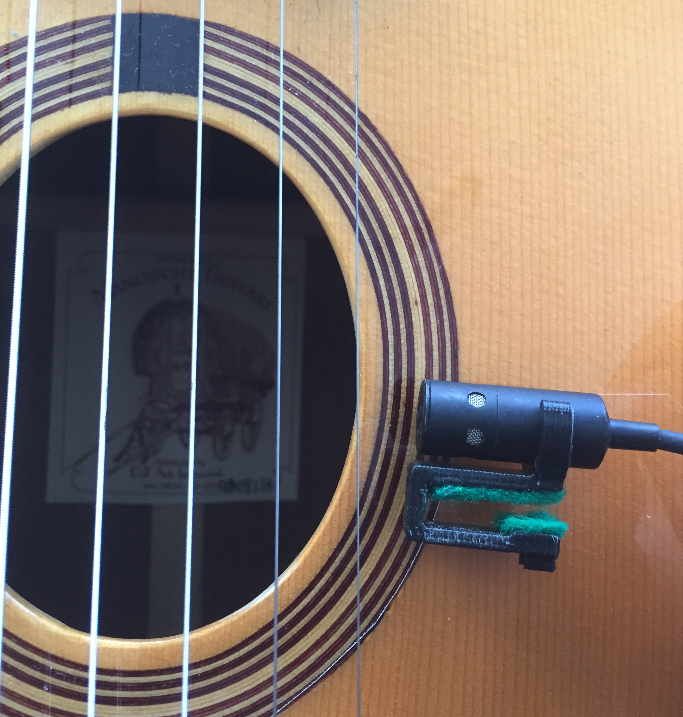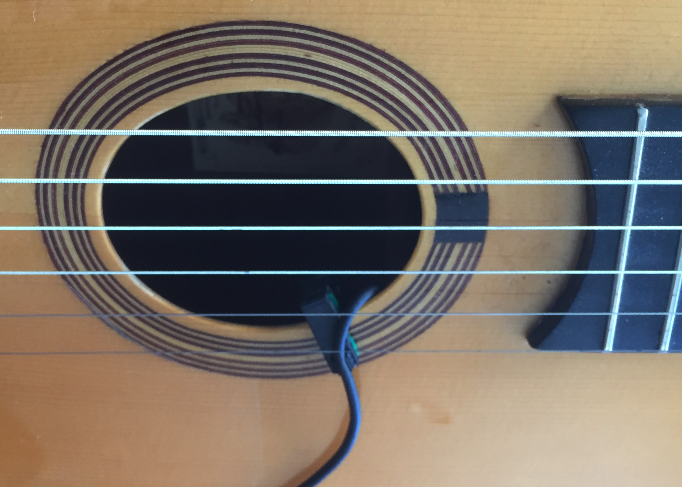Audio Technica Microphones are great! But..
Audio Technica lavaliere condenser microphones like the PRO 70 and AT831B are good choices for amplifying acoustic guitars and reproducing the tone of the instrument more accurately than pickups. The soundhole mount that comes with is also quite nice, but after a few months of use I lost the screw and clip attachment on a gig. This made the microphone essentially unusable. I was quite annoyed to find that a replacement mount would cost around 40 bucks! That’s nuts! I mean, sure that’s some fine machining and precision metalwork there, but c’mon… we’re starving musicians here.
The solution?
 I really couldn’t stomach spending that kind of dough so I decided to take the much more sensible approach of dropping $300 on a 3D printer, learning CAD off YouTube tutorials, and designing my own replacement.
I really couldn’t stomach spending that kind of dough so I decided to take the much more sensible approach of dropping $300 on a 3D printer, learning CAD off YouTube tutorials, and designing my own replacement.
While I was at it I figured: why stop at a copy of the stock soundhole mount? Subtle changes to where and how you mount them can make a huge difference in terms of sound quality and feedback suppression. So I designed two styles that accommodate some of the different approaches I’ve encountered.
Bridge Mount
 The first mount slides between the strings behind the bridge and the microphone can be in turn pointed straight down at the top of the guitar. This is for guitars that feedback almost instantaneously from the sound hole, which is often the case with large soundholes like the “D-Hole” style of gypsy jazz guitar.
The first mount slides between the strings behind the bridge and the microphone can be in turn pointed straight down at the top of the guitar. This is for guitars that feedback almost instantaneously from the sound hole, which is often the case with large soundholes like the “D-Hole” style of gypsy jazz guitar.
Overall this location results in a brighter, more treble-y sound. Both the distance from the bridge and the mic distance from the top can make some rather dramatic differences to the tone, though. Moving to the mount to the lower strings also brings out better bass response.
I like this design because you can just leave it on your guitar. When it’s time to amplify you can just slide the mic right in and be ready to go.
Internal Sound Hole Mount
I noticed that many players like mount inside the sound hole. This can really help fight feedback and interference from external noise. There are a few issues with this approach: it can be extremely hard to actually get the mount and microphone in the soundhole without loosening the strings or using some severe finger contortion. Also there’s the issue of the dangling cable. I’ve seen players tape it down to the top with duct tape! I addressed this by making the mount thinner, and including an extra clip on the other end for the cable.
The thin profile makes it easy to slide under the strings on the treble side. Once it’s there I reach from the bass side and wiggle it into place, then clip the cable to the other side. The clip keeps the cord away from the strings and sends it down and out of the way.
The result when this is installed:
If you flip the mount around, it can be still used as a exterior soundhole mount. I adjust the height by sliding the microphone and/or mount up and down. I haven’t found the need for much more than the 20mm max height of the print, thought I did make a 40mm version just in case.
Purchase the 3d models for your own 3d printer
If you have a 3D printer, you can purchase the files at my store:
There are two sizes to the soundhole mount. One has a 3mm top clearance and one has 5mm (for thicker guitars like archtops). You’ll probably need to add your own felt to the latter one if you want to protect your finish. I just glued some in there with superglue. But if you’re the kind of person that duct-tapes cables to your guitar, maybe you don’t care so much about the finish anyway… no judgement here 🙂
But I don’t have a 3D printer!
I guess you’re not alone there. They are also for sale fully printed at my

